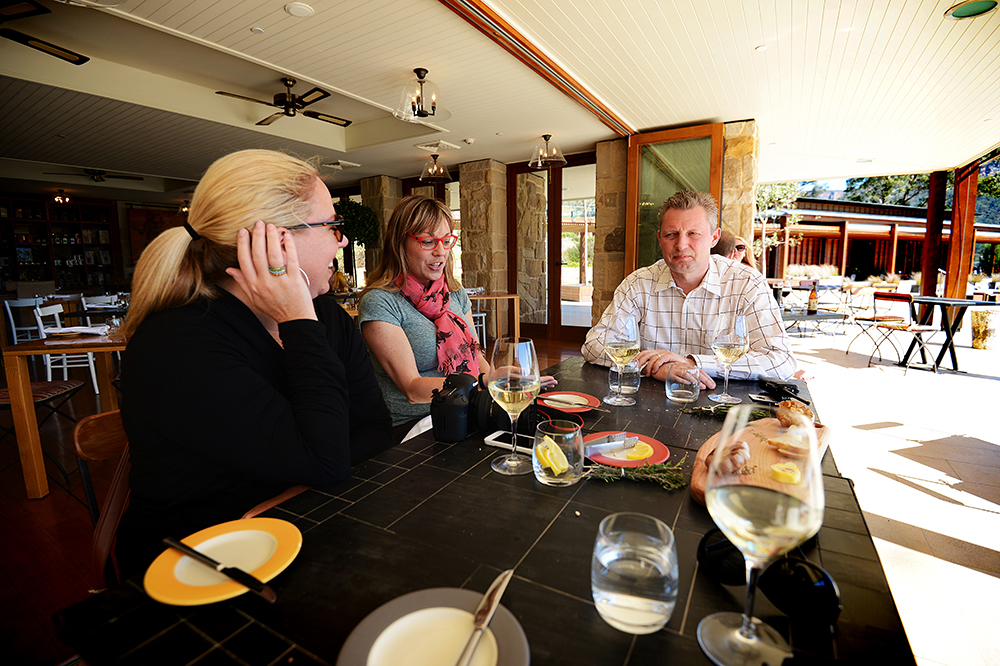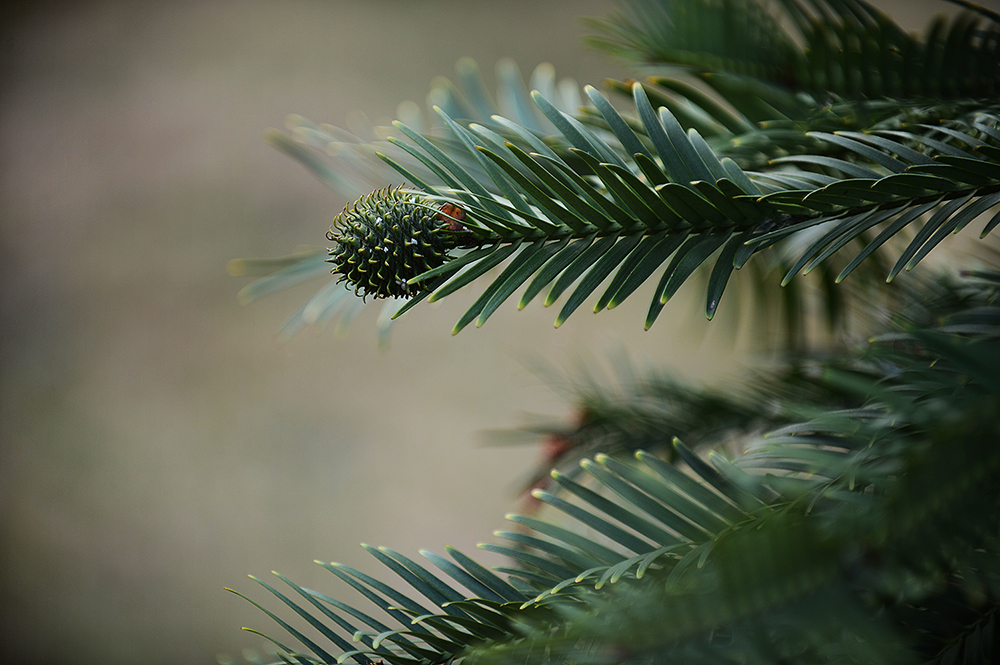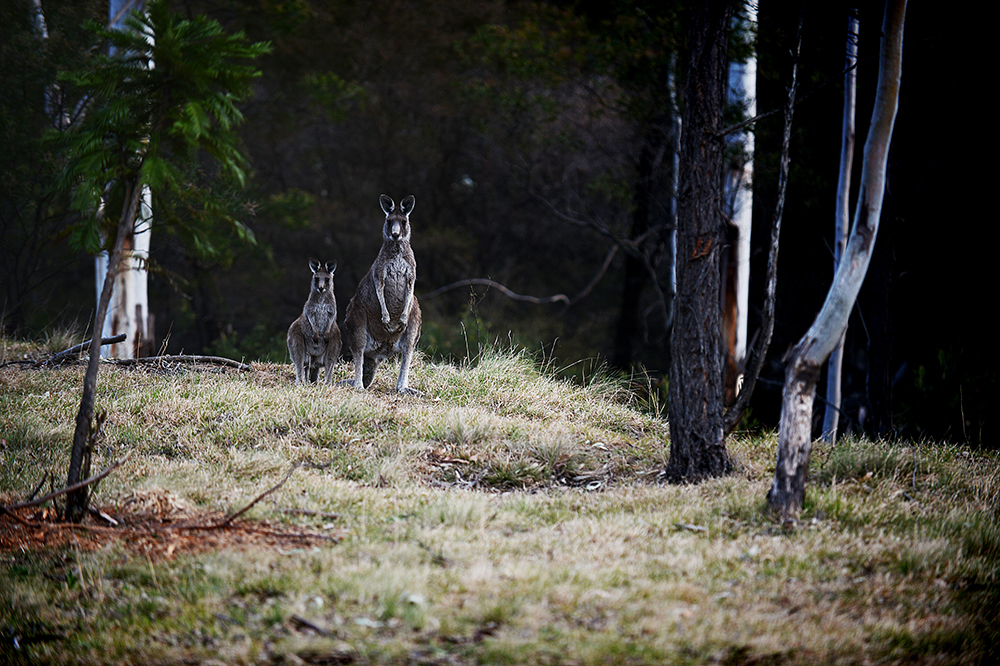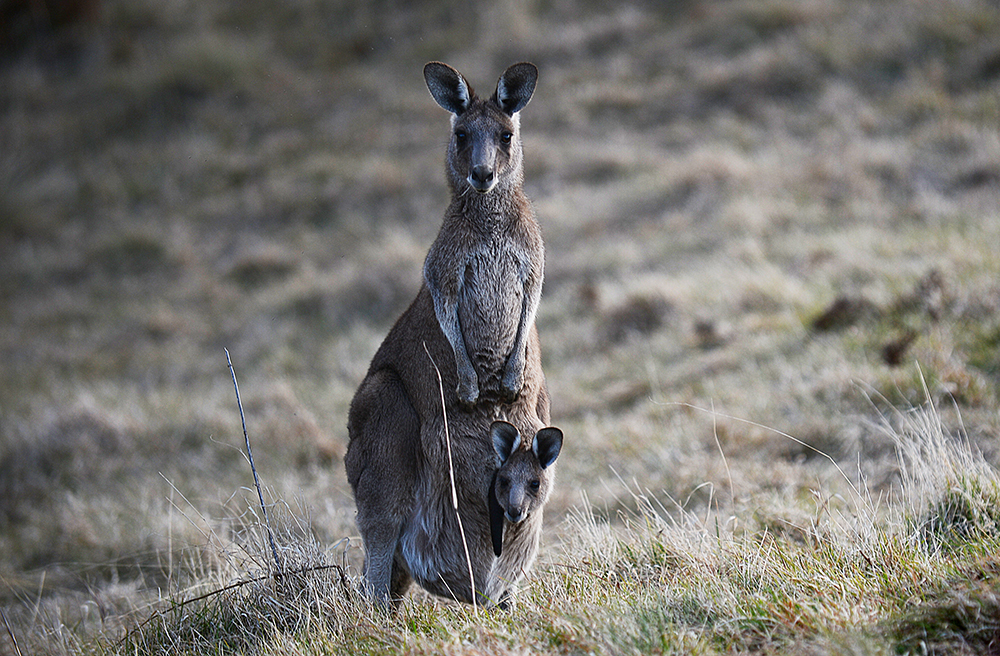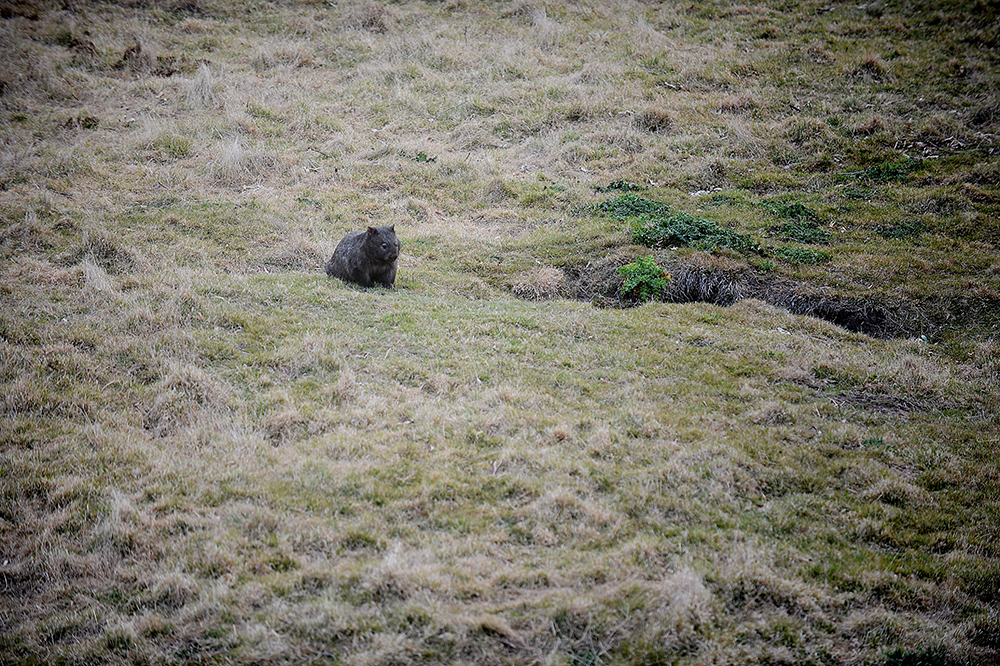wolgan valley (& 'roos!)
Let me just state up front: Wolgan Valley Resort, our home for the last 2 nights of our trip to Australia, is about as fabulously five-star as a resort can get. Located in the Blue Mountains, it is a very exclusive, all-inclusive getaway, with each perfectly-appointed suite actually a free-standing cabin, having its own private pool, beautiful linens, fireplace. The service is impeccable, and the meals are absolute perfection. If it's luxury you're looking for, it is is certainly luxury you will receive at this award-winning accommodation.
But honestly and very frankly, the luxury was only a very, very small part of what impressed me about Wolgan Valley.
When Maile, Rachel and I arrived after our 3-hour, incredibly scenic drive, we were met by Joost Heymeijer, the general manager of Wolgan Valley, who immediately led us to a bright and airy restaurant, and joined us for a wonderful (organic, locally-sourced) lunch. During our meal, he gave us a rundown of the resort.
While Wolgan Valley is undeniably deluxe accommodation, it is also quite casual, which I loved: there wasn't anything pompous or ostentatious about it in the least. Joost (pronounced "yoast," rhymes with "toast") , who has been with Wolgan Valley since its inception 8 years ago (construction was finished and the property opened 4 years ago), described the keen environmental focus that went into its planning and continues to go into its execution: the facility runs as close to carbon-neutral as possible, including reclamation and refiltration of water used on the property. The 4000-acre property (which is apparently less a "valley" and more an "intimate canyon") is part of the Blue Mountain World Heritage site, and abuts two national parks, but is not actually a park itself; in fact, it was home to various farms before it became a resort. Nonetheless, Wolgan Valley treats the area like a conservation park, including doing its level best to restore the area to its natural, unfarmed condition by planting native grasses and trees. (As a guest, you can even sign up for a "conservation hour," led by the resort's field guides, and help them plant trees yourself. We made sure to do this while we were there.) The resort employs as locally as possible, and similarly sources all of the food and necessary supplies. And speaking of the employees, Joost explained his mentoring philosophy:
"Treat the guests as if they were your parents' best friends," he advises his staff. "But above all, be your best self, and let the real you shine. Even if it's rough, as long as it's a diamond, that's totally okay. "
Joost was speaking my language, man.
The rest of our stay at the resort was spent proving Joost right: everything about time at Wolgan Valley was related to experiencing the conservation of the environment and the historic culture of the valley. The property has restored a few historic structures that were on the acreage, the "1832 homestead," where it is believed that Charles Darwin stayed while doing work in the area.
Yes, that's right: THE Charles Darwin.
And get this: the resort is instrumental in the conservation and regrowth of the Wollemi Pine, a beautiful tree that was only known in fossil records until its discovery in the nearby national forest in 1994. The tree is currently listed as "critically endangered."
Amazing, right? I mean, this tree dates back to the Jurassic Period. What you're looking at above, my friends, is actual dinosaur food.
It still blows my mind.
One of my favourite experiences during my stay there, however, was a private Aboriginal Interpretive Tour, led by one of Wolgan Valley's truly impressive field guides, Kristie. I was particularly keen on taking this tour (I decided to skip a horseback ride in order to make it happen), because to be quite honest, there was one thing that was nagging me throughout my visit to Australia: the treatment of Aborigine culture. To be specific, everywhere we went, there was evidence of aboriginal craft: art proclaiming to be authentic aboriginal work was on the walls of many, if not most of the buildings we visited, fake boomerangs and didgeridoos were sold in all the gift shops; one spa early in our trip even offered an "aboriginal" treatment, supposedly created in consultation with an Aborigine community. Yet despite this, no matter where we were, we didn't meet one person who seemed to be of aboriginal descent. While things have definitely improved, the treatment of the indigenous peoples of Australia by the government has historically been, to put it bluntly, shocking (as examples, people of aboriginal descent weren't allowed to vote until the mid-1960s; see also the Stolen Generations, a horrifying government policy and practice occurring until the mid-1970s); for this reason, the proliferation of so much aboriginal "culture" at every commercial turn I saw therefore still felt to me, as an outsider, to be a bit exploitative. I was hoping that this tour would help me learn more about true aboriginal culture on a deeper level than I was able to experience thus far.
I began my tour with Kristie by hiking up a small hill overlooking the valley. Before she started speaking, however, Kristie, who is white Australian, began with a disclaimer:
"Okay, so today I'll be telling you all about how the ancient Aborigine people lived in this area -- their tools, how they used to live day-to-day. However, to be clear, I will not be teaching you anything about aboriginal belief systems, or spirituality, or talk about the Dreamtime. This is because I personally feel that deep cultural teachings of this sort should be heard told by someone who is of aboriginal descent, not by someone like me. My deepest wish is that in the future, Aborigines will actually lead this tour, so that their knowledge and insights into their own culture can be shared authentically; but for the time being, I'm going to keep this more on a historical basis."
I can't tell you how much I admired Kristie for this statement: showing such deep respect for aboriginal culture helped ease some of the discomfort I had been feeling thus far into the trip. Her respect continued throughout the hour-long discussion we had about ancient aboriginal daily life, and her knowledge (gained by research, but also by conversations with local Aborigine elders, since much of aboriginal history is kept by oral tradition), was considerable. As it happened, the site we were standing on is believed to be the ancient summer shelter of an Aborigine family group of about 20, and there they had found several primitive tools that were used:
Two stones act as a primitive mortar-pestle, grinding seeds, to which a little water was added to make a sort of "cereal" paste.
The stone in Kristie's left hand was used to hone the stone in her right to make a sharp edge, used in spears, axes or knives.
This was my favourite tool of all: ancient Aborigines used to travel within the region, and as you'd expect, would start fires by striking flint rock, or rubbing two sticks together. However, to speed up the process, sometimes seed pods like this one would be used: they would be lit by an old fire, after which they would glow, and it would be one family member's job to carry it to the next campsite, occasionally blowing on it gently to keep its embers glowing -- in that way, the fire at the new campsite would be lit more easily. Ingenious.
It was really riveting and heartening to see and hear about ancient Aborigine life, shared with the honour and dignity it deserved. Kristie did a fantastic job. And while there's no question I'd love to return to this resort for so many reasons, if Wolgan Valley makes Kristie's dream come true of having local folks of aboriginal descent start teaching this tour in the future (thus providing first-hand insights into aboriginal culture), this will absolutely cement my resolve to save my pennies and make that return visit happen-- for Wolgan Valley is truly a magical place.
Of course, another highlight of our visit was a wildlife safari tour Maile, Rachel and I enjoyed, also led by the indefatigable Kristie. We piled into a rugged, open-air truck just as the sun was beginning to set, and we set out to learn about Australian wildlife. Wolgan Valley Resort acts as a conservation area for the local animals, and wonderfully, they all run freely around the property.
The primary animals at Wolgan Valley include kangaroos, wallaroos and wallabies. All three of these animals are "macropod marsupials" (which means, in my simple mind, that they are mammals that carry their young in pouches and have big feet), and the primary difference among them is size: kangaroos are large and leanly muscular, wallabies are the smallest (and look almost opossum-like), and wallaroos are somewhere in-between, with more of a stockier build. Although we primarily saw wallaroos on the tour, we apparently saw kangaroos as well; however, for the life of me I couldn't tell you with certainty which ones of the following images includes a kangaroo (despite detailed, patient explanations by Kristie and others of her coworkers).
They all made for some fun shots, though:
I think this dude in the foreground is a kangaroo. I'm pretty sure he's a kangaroo? Let's call him a kangaroo.
We also saw quite a few wombats. They're funny, snorty little things, and seem somewhat fearless: one visited our cabin both nights we were there. Rachel called them "furry little ottomans":
Awesome animals, all of them.
And with that (and save for a roll of Hasselblad film that is currently being processed as you read this), my sharing of my great Australian adventure is complete! I hope you enjoyed it. I think it's pretty obvious that if you ask me whether you should visit the land Down Under, I would respond with an emphatic "YES!" It is a mindbendingly beautiful country, truly, and I'm definitely making it a life goal to return with my family (next time, with New Zealand thrown in, for good measure). If you'd like to see all of my absolutely favourite shots I took while in Australia in one place, please be sure to check out the brand new Australia gallery in the Global Light section of Chookooloonks.
Thanks so much for following along, friends. I now return you to your regularly scheduled programming.
read more of my australian adventure here:
BrisbaneWhitsunday Islands
Sydney: Whales!
Sydney: The Opera House & the CBD
Sydney: From Above
Driving into the Blue Mountains
Huge thanks to Tourism Australia, Air New Zealand and Go Mighty for making this adventure possible. If a trip Down Under is a dream you've had, please be sure to check out the Tourism Australia site for all sorts of juicy information about Australia; in addition, throughout October Tourism Australia, Air New Zealand and Go Mighty are running two additional campaigns to help make your dream come true in 2014: the first, Fill-A-Plane, where you can sign up to be one of 322 people to get a special discount on air travel for folks who take the pledge to travel to Australia next year; the second, "Win a Wild Card ticket to Australia," for a chance to win a trip to Australia, by simply becoming a member of Go Mighty and adding your wildest Australia-based dreams. You can check out all the details here. And to see my iPad images and listen to more in-the-moment impressions I had while in Australia, be sure to check out my Go Mighty posts of this adventure.

